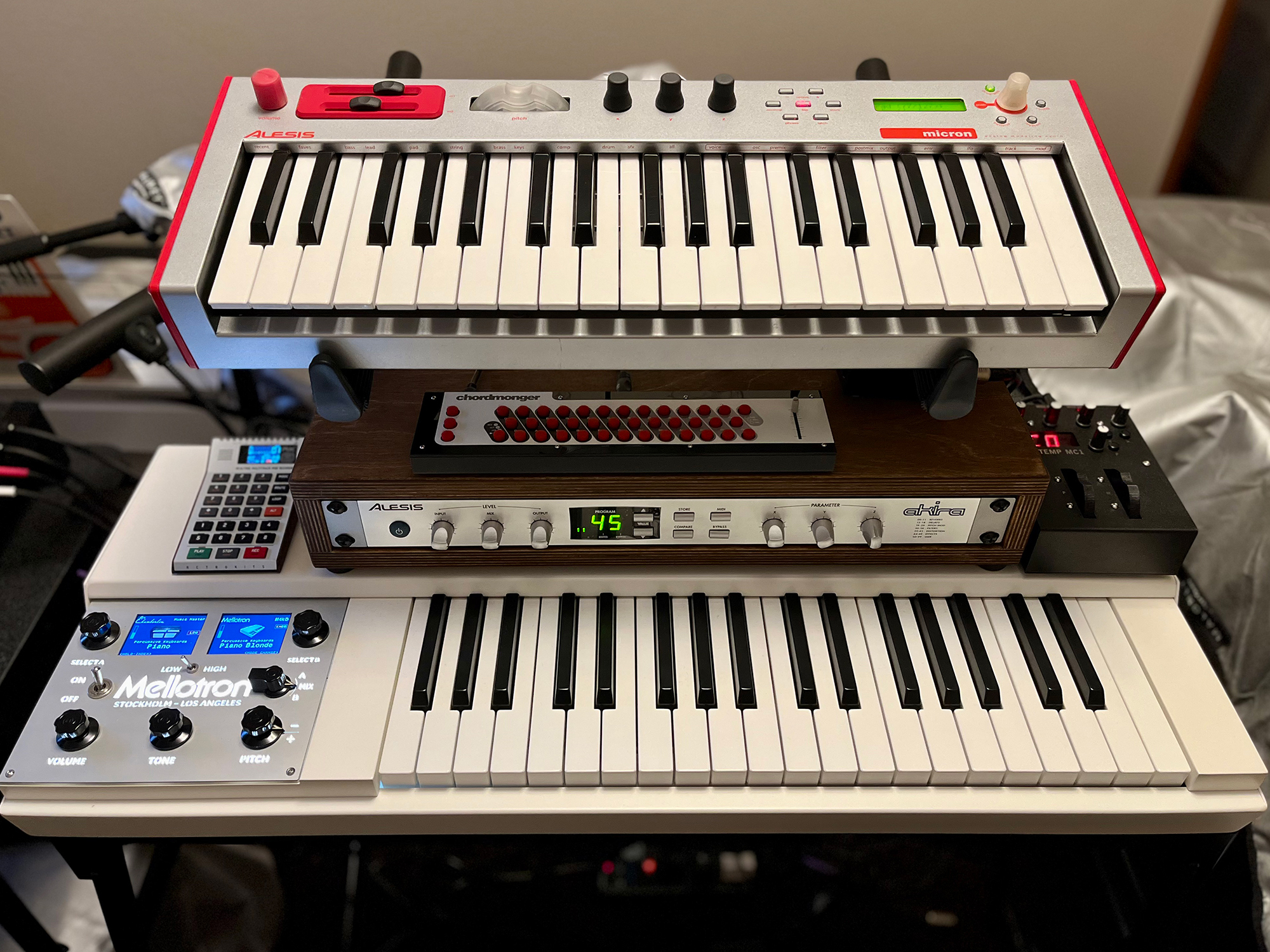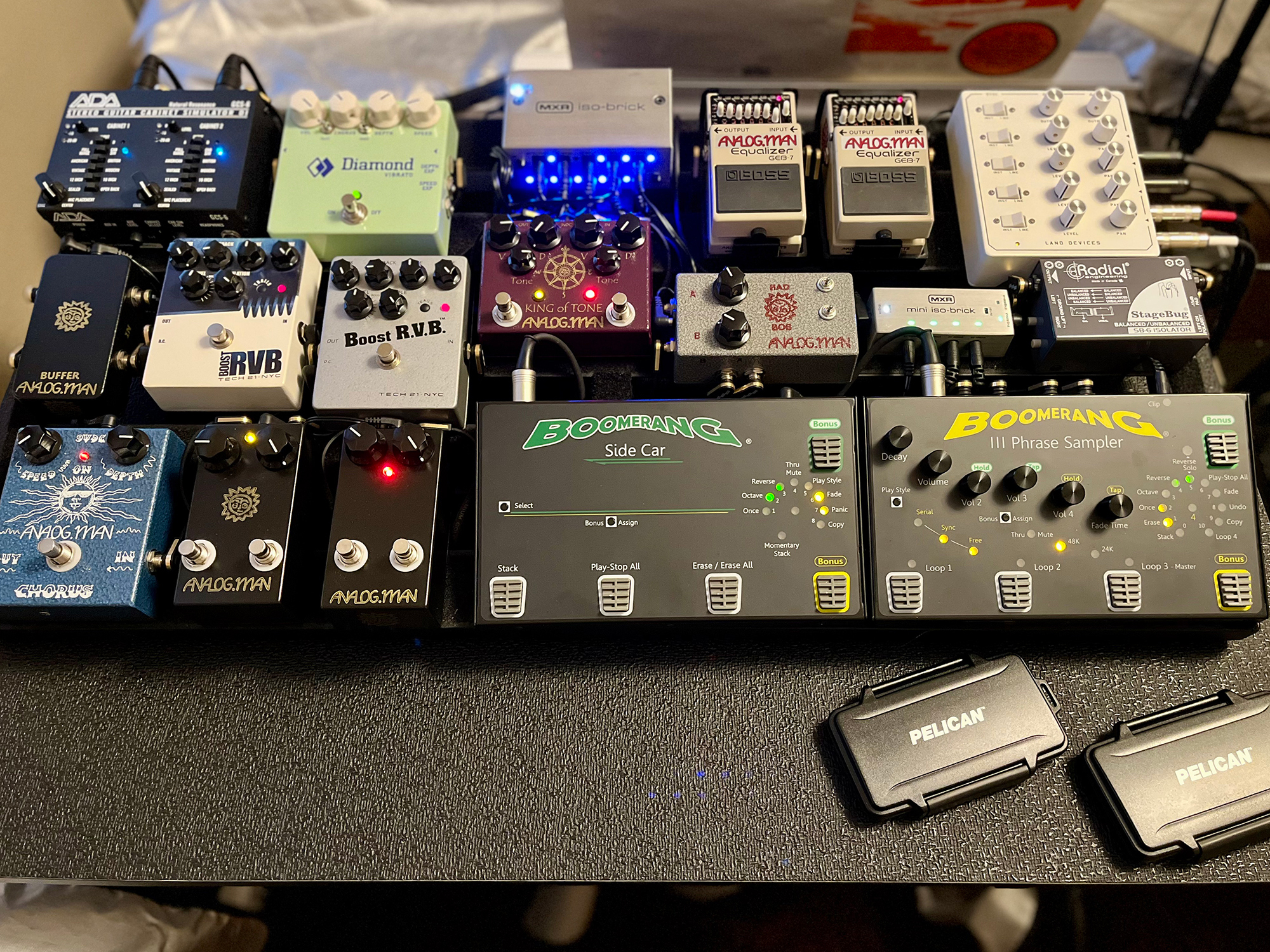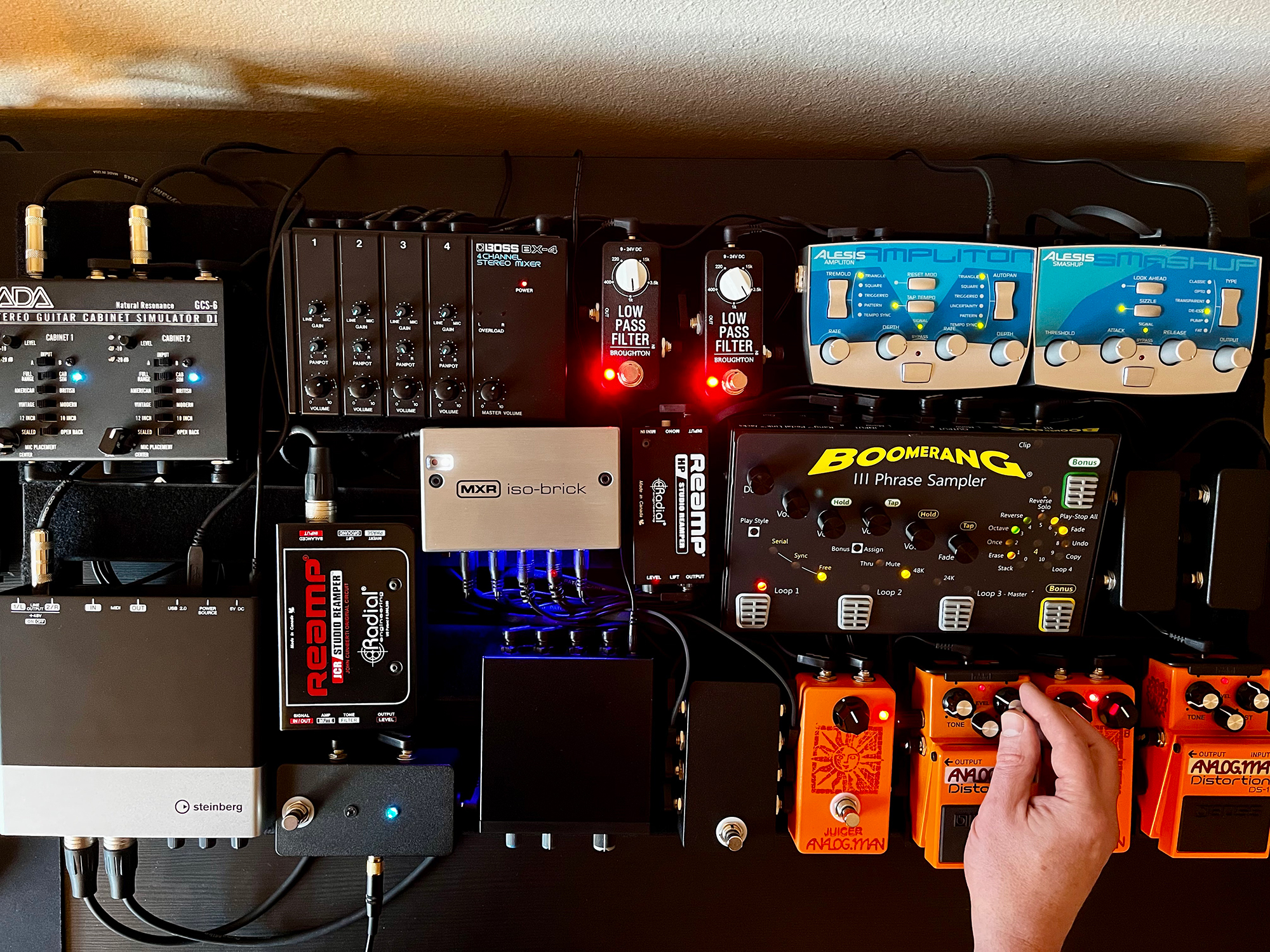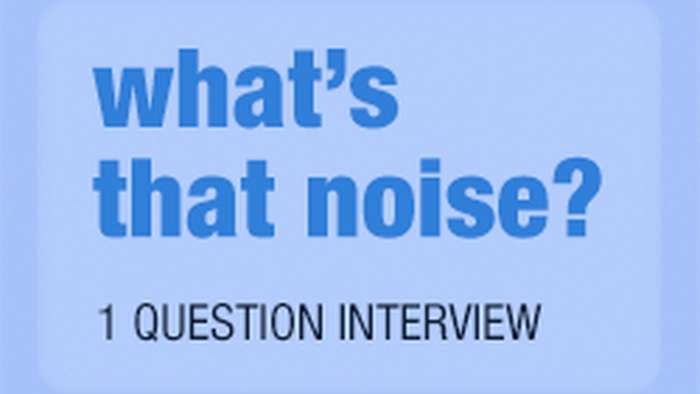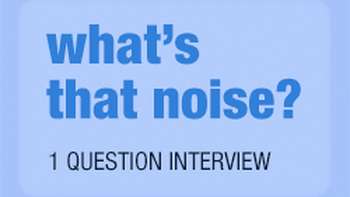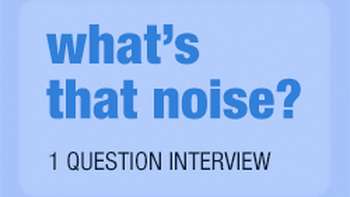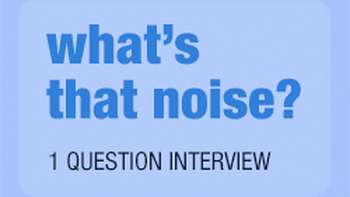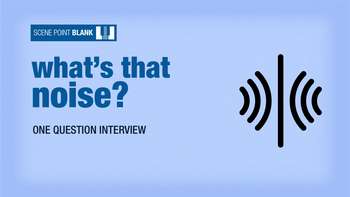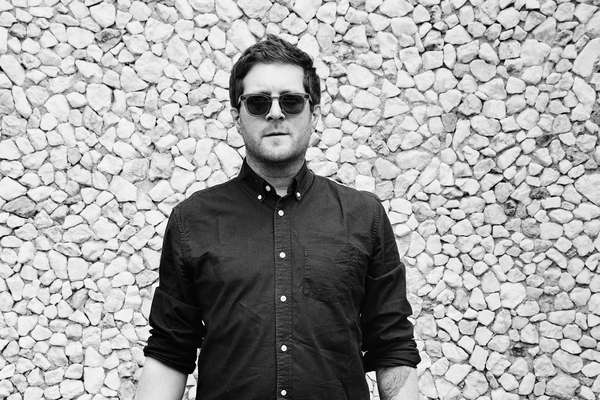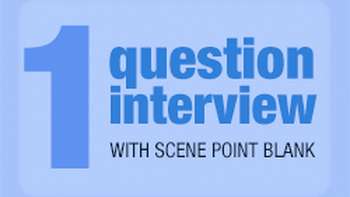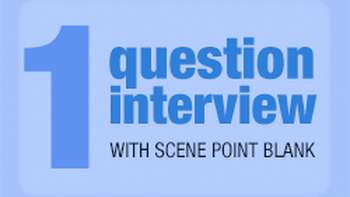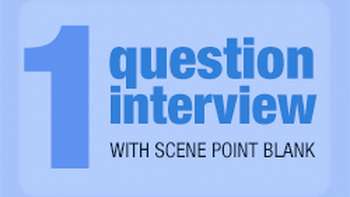Eric Angelo Bessel
SPB: Walk us through your gear setup for the recording of Mirror at Night.
Eric: I composed the album, Mirror at Night, using a pair of digital Mellotrons (proto-sampling keyboards), an Alesis Micron (keyboard synthesizer), and guitars. The Micron is a new addition, and is the main instrument for songs “Scavengers” and “Headlamps.” I’ve used the Mellotrons since 2017, and they can be heard on Lore City’s albums and my solo work. The guitars are used sparingly, but they’re swirling around deep inside the audio. Transfiguring the disparate sounds of these instruments gets me about halfway there, and I credit what happens next to a collection of new and old effects pedals and a few stereo rack effects units.
All sound passes through a Land Devices Compact Mixer which has 4 inputs each with stereo panning and a dual mono output. From there, we enter a pair of modified Boss GEB-7s, a dual mono Analogman King of Tone, and a stereo A/DA GCS-6. These pedals interact to sculpt and tame harsh frequencies, since the Mellotron and Micron deliver incredibly varied sounds. Then, depending on the song, I’ll use the Boomerang III, a pair of re-boxed Schaller tremolo pedals, and a pair of Tech 21 reverb pedals. The Boomerang is the most intuitive and powerful stereo phrase sampler that I’ve been able to find, but the tradeoff is it’s huge! The Schaller pedals sound like they’re from another musical era, probably because they are, and introduce a unique syncopated texture; Analogman put them into new boxes for me since the original Bakelite and metal cases kept short-circuiting. For reverb, the Tech 21s have been my go-to sound for the past 13 years, but more recently, there’s an excellent reverse reverb hidden inside the Alesis Akira, and using it early in the signal chain shaped the percussive pianos in songs “Tendons” and “Recombinant.” I use the Diamond Vibrato and Analogman Chorus at very low settings to create a slightly modulated dual mono widening effect. A combination of these instruments and effects are recorded into the DAW.
On my mixing table, I use a pair of Radial boxes to re-amp what I’ve recorded and join all the disparate sounds together. I have splitters and junction boxes from American Loopers that make the audio signal routing and playback monitoring possible. There’s a pair of Broughton Low Pass Filters, a couple of Alesis ModFx units and a Vocal Zapper, a Boss BX-4 and a pair of modified DS-1s, a pair of Analogman Juicer compressors, and a stereo A/DA GCS-6. All of these interact to further sculpt the sounds and I enjoy the tactile quality of adjusting knobs rather than relying completely on the DAW for mixing. There’s another Boomerang III to spontaneously capture and reimagine sections of the songs and then blend them back into the mixes. As a final step, I use a passive analog tape simulator made by Handsome Audio. I think of it as a type of transformer-based enhancer. It’s a subtle effect, but I always notice when it’s there!
